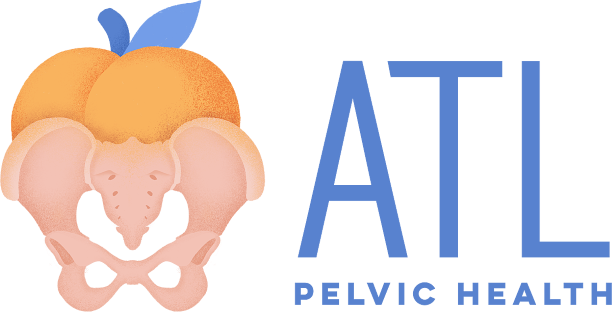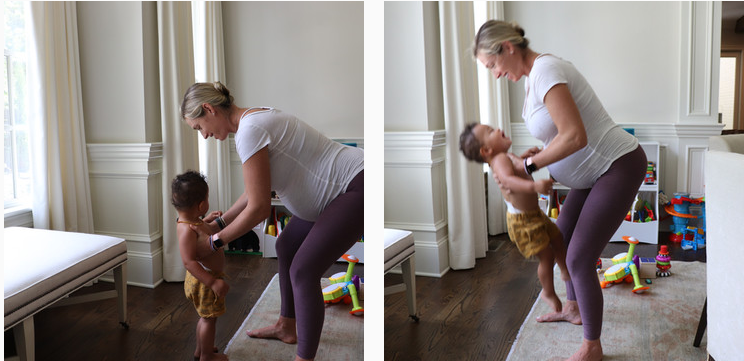Top 10 Reasons to See A Pelvic Floor Physical Therapist After Birth
Do you know when you should see a pelvic floor physical therapist after childbirth? Regardless of vaginal or cesarean birth, we believe pelvic floor physical therapy should be a standard of postpartum care. Women’s bodies go through incredible physical, hormonal, and musculoskeletal changes during pregnancy and childbirth. If you underwent ACL reconstruction, you would receive up to 8 months of rehabilitation, so why don’t we provide this same level of care after childbirth? Here are the top reasons we believe you should see a physical therapist after birth:
Diastasis Recti Abdominus
Pelvic floor physical therapists are trained in assessing for diastasis recti abdominus (DRA). This is when there is separation of your abdominal wall (the 6 pack ab muscles). Restoring core function is crucial to allow you to return to day to day activities as well as help you reach any fitness related goals you may have. Did you know most people with DRA also deal with low back pain? We can teach you how to properly engage your deeper core muscles and to better support your body so you can move and lift your baby without pain.
2. Pelvic Floor Assessment
Your body goes through so many changes throughout the 9+ months you are pregnant. Your pelvic floor lengthens and weakens to support the weight of a growing uterus. These changes in pelvic floor function, regardless of how you gave birth, may result in urinary leakage, constipation or pelvic pain. It is important to be assessed by a pelvic floor physical therapist to understand how well your muscles are able to contract and relax as well as if there are any areas of tenderness or tightness in the muscles. Understanding the function of your pelvic floor will help you optimize your bladder, bowel and sexual function.
3. Bowel Health
Pelvic floor physical therapists can educate you on how to improve your gut motility and bowel health. Most women have a lot of fear around the first postpartum poop and some may deal with hemorrhoids or pain with bowel movements after birth. Pelvic health experts can educate you on how to improve bowel movements so you don’t have to worry about your next poop.
4. Bladder Health
Are you waking multiple times a night to pee? Find yourself needing to run to the bathroom every 30 minutes? Don’t feel like you can hold your bladder the way you used to? Pelvic floor physical therapists can help identify triggers and give you tools to take back control of your bladder.
5. Breathing
Diaphragmatic breathing is an integral part of your core function. Learning how to properly breath is so important for the health of your pelvic floor and core. Your ribcage likely shifted as it made room for your growing baby. It is integral to retrain your body on correct breathing patterns to be able to access your deep core muscles properly.
6. Posture
Whether you are breast or bottle feeding, it is important to pay attention to your posture to avoid aches and pains in the future. We can educate you on how to improve positioning with pillows as well as different mobility stretches and exercises to reduce tension in your neck, shoulders and mid-back.
You may also like to baby wear, as it creates a wonderful bond with your baby and allows you to get tasks done around the house without being “nap trapped.” While baby wearing is great, sometimes you can start to have pain in your middle or lower back. Teaching you improved posture and alignment can reduce that pain or any pressure you may be feeling in your pelvis.
7. Scar mobilization
Are you having pain around your cesarean incision after birth? Do you avoid wearing jeans, your baby or laying on your stomach because it doesn’t feel good? Have you noticed sex is less pleasurable because of your perineal scar? Restrictions in your scar tissue mobility can lead to abdominal pain, pain with sex or other pelvic floor dysfunction. A pelvic floor PT can guide you on appropriate ways to begin stimulating the scar with light touch and scar mobility techniques to reduce tension in your scar tissue.
8. Pain Free Sex
Many women experience pain with intercourse after birth. Healing tissue from a vaginal tear or episiotomy may cause pain with penetration during sex. Your vagina may be dry due to the estrogen changes if you are breastfeeding or pumping. You may not feel like your pre-pregnancy self which is impacting your sex life. You may not be able to orgasm, you leak with orgasms or orgasms now feel painful rather than pleasurable. A pelvic floor PT can help with all of this and get to the root of your symptoms.
9. Lifting Mechanics
Once you are cleared by your provider to begin lifting light weights, a pelvic floor PT can guide you on the best body mechanics and breathing strategies to lift your baby, car seat, stroller, groceries, etc off the floor. In reality, it is hard to avoid lifting in our daily life. The best way to protect your body from future injury is to learn how to lift correctly.
10. Return to Exercise
When is it safe to run again? Can I go back to my Crossfit gym? How should I modify certain ab exercises? There is so much information online about exercises you should do or avoid after baby. It can be overwhelming and you may feel stuck on where to even begin. Everyone's fitness goals or exercise routines can be different, but a pelvic floor physical therapist can guide you on the best exercises for you to start building a strong foundation. This will allow you to return to the activities you love without abdominal pain or pelvic floor dysfunction.
Do you still have more questions or want to see if pelvic floor physical therapy is right for you? Schedule your discovery call with us today!




